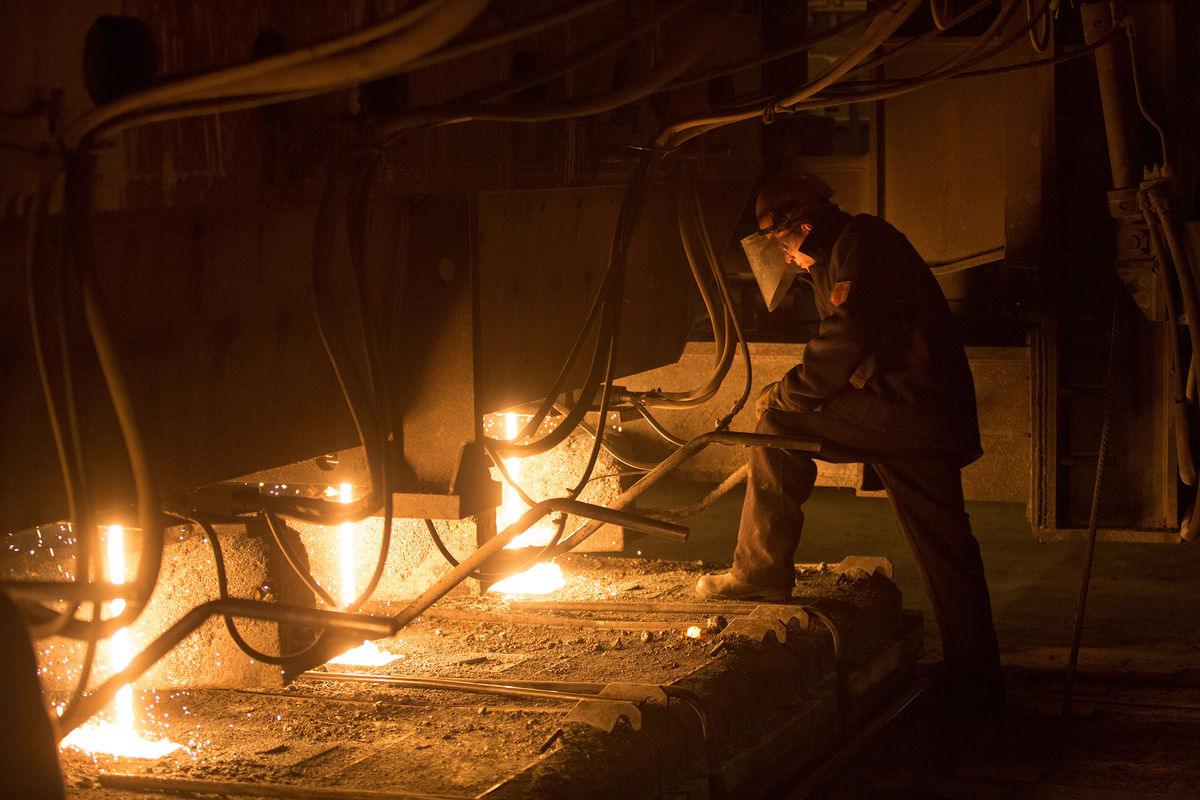Russia steel mills become world beaters after ruble’s slide

By Bloomberg
The collapse of the ruble, which has pushed up prices for millions of Russians as the economy slides into recession, hasn’t been bad for everyone. The country’s steel mills are suddenly world beaters.
Producers including PAO Severstal and OAO Novolipetsk Steel pay wages and other costs, including transportation, in rubles while earning dollars or euros for exported steel. That’s allowing them to undercut rivals like ArcelorMittal, the world’s largest steelmaker, while maintaining profitability.
“This is fantastic time for the Russian steel industry,” said Kirill Chuyko, head of equity research as BCS Financial Group. “Most of the companies are enjoying the best profitability since the 2007 and 2008 pre-crisis commodity boom due to the ruble’s decline.”
Even before the ruble’s 47 decline last year the industry was in good health. Output last year reached the highest since the global financial crisis as demand at home was high and started to recover in European export markets. Russia’s steelmakers have invested billions in upgrading Soviet-era mills, and the nation produces more than any other country in Europe, one of its main export markets.
Now, the ruble’s slide has cut costs for Russian mills by almost half in dollar terms. Making hot rolled coil, a benchmark product, now costs $244 to $250 a ton in Russia compared with $405 per ton in Brazil and $434 per ton in China, according to CRU Group, an industry consultant.
Russian Actions
Russia’s economy may contract 4 percent in 2015 after the U.S. and Europe imposed sanctions on the economy and oil prices fell to about $60 a barrel. That has yet to feed through to the steel industry, which isn’t affected by the measures designed to punish Russian actions in the Ukraine.
Russia produced 70.65 million tons of steel last year, the second highest output since the collapse of the Soviet Union in the early 1990s, World Steel Association data show. Even as demand shrinks at home, exports are likely to jump.
Steel prices have softened in the past year, exports of hot rolled coil from Russia have dropped more than 27 percent in the last 12 months to $382.50 per ton, according to Metal Bulletin data. Nonetheless, currency devaluation means producers have never been more profitable since at least 2008.
The profit margin for Severstal or Novolipetsk Steel is near 30 percent, according to Morgan Stanley, which bases its estimates on earnings before interest, tax, depreciation and amortization. Severstal’s Ebitda margin climbed to 32 percent in the fourth quarter, the highest since 2002, when the company started to report financial results.
Falling Prices
“In the condition of falling prices at export markets, Russian steelmakers are benefiting due to ruble weakening,” NLMK CFO Grigory Fedorishin said in an interview.
That’s been reflected in the share prices of steelmakers. Severstal and OAO Magnitogorsk have more than doubled in the last 12 months. NLMK added 63 percent. BCS recommended to buy all Russian steel names last month because domestic prices in Russia are yet to catch up with export.
The competitive position of Russian steelmakers has been noticed by rivals like ArcelorMittal, the world’s largest producer, based in Luxembourg.
“Russian steel exports are very competitive, the ruble has depreciated a lot,” Aditya Mittal, chief financial officer at ArcelorMittal, said on a conference call this month. “The Russian economy has fallen into recession which means lower domestic consumption, which means more tons to exports.
Domestic Demand
Russian domestic steel demand may fall by about 7 percent this year, meaning that the country may boost exports by as much as 4 million tons, Dmitry Popov, an analyst at CRU Group, said by e-mail. Morgan Stanley estimates that Russian steel export may jump 16 percent to 28.8 million tons this year, or 44 percent of output, the bank’s analysts said in a Jan. 28 report.
That will put strong pressure on prices in Russia’s traditional export destinations such as Europe, North Africa and Middle East as well as new ones like India, Popov said.
Since Ukraine in a similar position to Russia -- its currency has weakened 66 percent in 12 month -- the two countries together will help the net steel export from the former Soviet Union jump 12 percent this year, according to CRU. Together, Ukraine and Russia account for 16 percent of global steel exports, second only to China.
ArcelorMittal will compete because it has stronger exposure to the high value-added segments such as automotives and appliances, Mittal said.
The first quarter cash costs in Russia may decline even further but it’s yet hard to say how much domestic market may shrink or export to be boosted, Severstal’s management said on a Feb 18 call.
Here we are to serve you with news right now. It does not cost much, but worth your attention.
Choose to support open, independent, quality journalism and subscribe on a monthly basis.
By subscribing to our online newspaper, you can have full digital access to all news, analysis, and much more.
You can also follow AzerNEWS on Twitter @AzerNewsAz or Facebook @AzerNewsNewspaper
Thank you!
